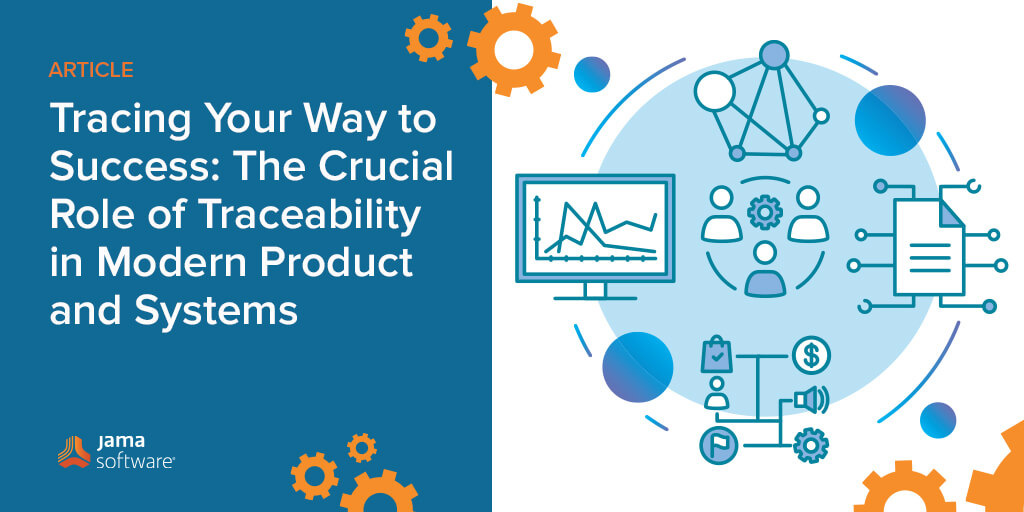
Tracing Your Way to Success: The Crucial Role of Traceability in Modern Product and Systems Development
Traceability is a crucial aspect of product, system, and software development that enables organizations to maintain a record of the components and activities involved in the design, production, testing, and delivery of their products. In essence, traceability means being able to show documentation of the “trace” of a product or system, from its inception to its final state, in order to ensure quality, compliance, and accountability.
What is Traceability?
In its simplest definition, traceability refers to the ability to track and document the lineage or history of an item, process, or system. It involves keeping track of the various components, parts, materials, and processes involved in the creation of a product, as well as the different stages of testing and inspection that the product undergoes. In this way, traceability provides a way to verify that a product meets the required specifications and standards, and that any defects or problems can be quickly identified and resolved.
Why is Traceability Important?
Traceability is particularly important in industries such as aerospace, automotive, and medical devices, where safety, quality, and compliance are critical. In these industries, traceability systems are often mandated by regulatory bodies to ensure that products are safe, reliable, and comply with applicable standards and regulations.
What is a Traceable System?
A traceable product or system is one that has a documented history or record of its development, production, and testing. This record provides a complete picture of the product or system, including its design, components, and any modifications or changes made throughout its development. A traceability system also enables organizations to quickly identify the source of any issues or problems that arise during production or testing, and to take corrective action as needed.
RELATED: [Webinar Recap] New Research Findings: The Impact of Live Traceability™ on the Digital Thread
What Are the Benefits of Traceability?
The benefits of traceability are many. First, it ensures product quality by enabling organizations to track and verify that all components and processes meet the required standards and specifications. This helps to reduce the risk of defects and recalls, which can be costly in terms of both financial loss and damage to a company’s reputation.
Second, traceability helps to ensure compliance with regulatory requirements. In many industries, organizations are required to maintain detailed records of their products and processes, and to demonstrate that they are meeting all applicable standards and regulations. A traceability system provides a way to easily produce these records and demonstrate compliance.
Third, traceability promotes accountability and transparency. By maintaining a complete record of a product’s development and testing, organizations can demonstrate that they are taking steps to ensure quality and safety. This can help to build trust with customers and stakeholders and enhance a company’s reputation.
How Do You Enable Traceability?
In practice, traceability involves the use of tools and systems to track and document the various components and processes involved in product development and testing. These tools can range from simple spreadsheets and databases to modern requirements management platforms that enable Live Traceability™ and integrate with other product development tools such as product lifecycle management (PLM) systems, test management tools, and task management tools like Atlassian Jira and Azure DevOps.
RELATED: Extending Live Traceability™ to Product Lifecycle Management (PLM) with Jama Connect®
Challenges in Implementing Traceability
One of the key challenges in implementing traceability is ensuring that all relevant data is captured and documented. This can be particularly difficult in complex product, systems, and software development processes involving multiple teams, suppliers, and partners. However, by establishing clear processes and standards for data capture and documentation, organizations can overcome these challenges and reap the benefits of traceability.
In conclusion, traceability is a critical aspect of product and system development that enables organizations to ensure product quality, compliance, and accountability. By maintaining a complete record of a product’s development and testing, organizations can reduce the risk of defects and recalls, demonstrate compliance with regulatory requirements, and build trust with customers and stakeholders. While implementing a traceability system manually is very challenging, using a modern platform like Jama Connect® automatically creates Live Traceability throughout the development process.
- A New Partnership for Digital Design & Product Development eXcellence - September 21, 2023
- G2 Again Names Jama Connect® the Standout Leader in Requirements Management Software in their Summer 2023 Grid® Report - July 12, 2023
- Tracing Your Way to Success: The Crucial Role of Traceability in Modern Product and Systems Development - July 6, 2023